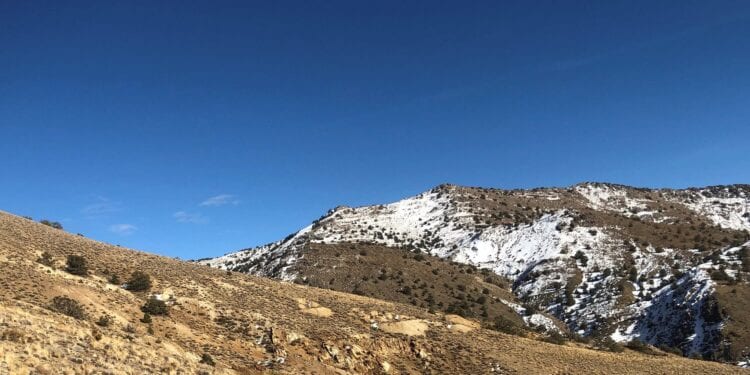Launches 2021 Exploration Programme In Southern California
K2 Gold Corporation (TSXV: KTO) has identified two new target areas of gold at the Upland prospect and pathfinder element anomalies through reconnaissance sampling at the Mojave project in Southern California.
A total of 482 prospecting chip and grab samples were collected on the Mojave property, with the majority of sampling focused on the Upland target area (416), and with additional sampling conducted on the Newmont, Broken Hill, and Gold Valley target areas.
President and CEO, Stephen Swatton, said assays for the work ranged from trace to 2.17 g/t Au and from trace to 126 g/t Ag, respectively as the company prepares to launch its 2021 Exploration Programme at Mojave.
“The identification of two new un-drilled gold targets at Upland further highlights the potential of the mineral rich environment at Mojave,” Mr Swatton said.
“Our exploration efforts continue to unearth anomalous gold across multiple kilometres on surface and along strike to known occurrences of high-grade oxide gold.
“We are excited to launch our 2021 field program which will follow up on last year’s successful program and provide complementary information for the next phase of drilling that is advancing well through permitting.”
The Upland target is located in the south-central portion of the Mojave property, approximately 1.7km west of the Newmont target, and consists of a 4km x 2km, N-S trending area of strong structural deformation and alteration initially defined by World-View 3 alteration surveys.
The area was historically unexplored and reconnaissance style rock chip sampling was conducted across the target to evaluate for zones of anomalous gold and pathfinder geochemistry for follow up work.
The sampling was conducted either along lines approximately 125m apart or along ridge lines with composite chip samples collected from outcrop approximately every 15 – 25 meters pending ground conditions.
A total of 416 samples were collected on the target and assays for the initial program defined two areas, the Belshaw and Boland zones, with anomalous gold (up to 0.34 g/t Au) associated with broader halos of anomalous pathfinder geochemistry (Ag, As, Hg, Pb, Sb +/- Cu).
The Belshaw zone occurs along a north-south trending ridgeline, immediately east of the Stega target, and consists of a 275m, open, trend with locally anomalous gold (up to 0.34 g/t Au) and strongly elevated pathfinder elements associated with a northly trending fault zone within Triassic siltstone, limestone, and conglomerate.
A series of historic working also occur on the target and are focused on galena bearing barite-carbonate veins that return assays up to 1% Pb and up to 126 g/t Ag.
The Boland zone is located approximately 1km south of the BR zone and consists of an approximately 400m x 500m area of locally anomalous gold (up to 0.23 g/t Au) with strongly anomalous pathfinder elements associated with a complexly deformed sequence of siltstone and limestone with sericite-clay alteration, localiaed silicification, strong iron-oxide development, and numerous altered diorite porphyry sills and dikes.
The reconnaissance sampling programme was successful at highlighting the strongest zones of anomalous geochemistry within the broader Upland target area. Upcoming work will include geologic mapping and detailed sampling of both the Boland and Belshaw zones to define the controls on and strongest zones of mineralization.
Additional rock sampling was conducted on the Newmont Zone where the company recently announced drilling results of 1.64 g/t Au over 41m from hole NM20-011 and 1.00 g/t Au over 22.86m from hole NM20-016.
The rock sampling focused on following the surface trace of mineralization along the Newmont Fault to the northeast and evaluating for potential subparallel zones of mineralization. The samples returned values from trace to 2.17 g/t Au with the strongest values associated with strongly silicified siltstone with stock-work quartz veining and strong iron oxide development along the trace of the Newmont Fault, extending the surface trace of mineralization 230m along strike.
The surface trace of the Newmont zone now extends 950m along strike and is open to the northeast.
Upcoming work on the target will include detailed chip sampling and geologic mapping along the north-eastern extension of the target and continued prospecting and evaluation on strike of the trend.












